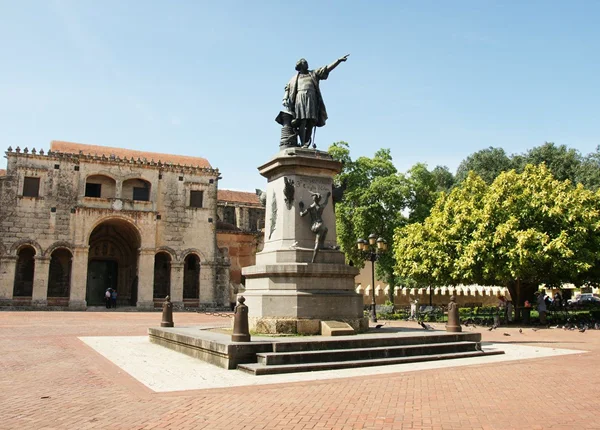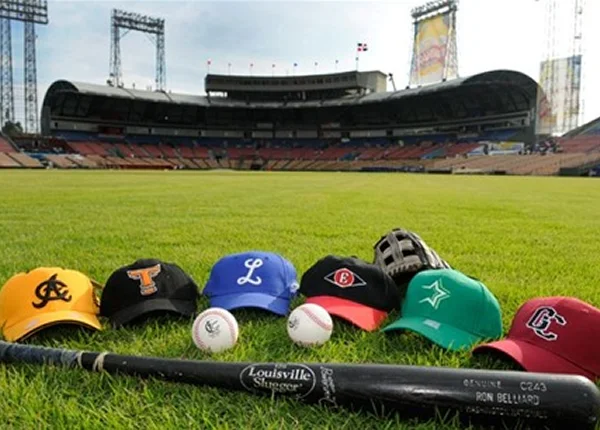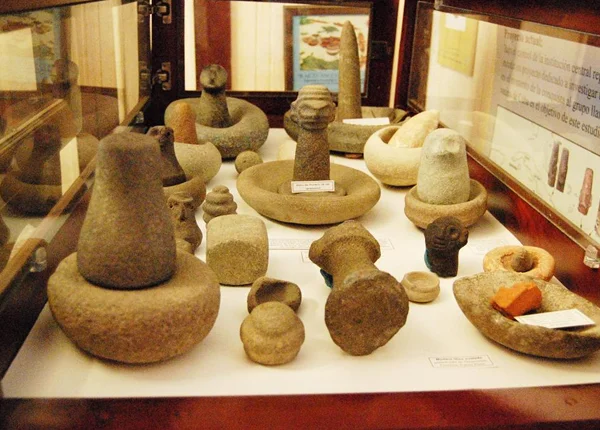Dominican Republic Cigar Blue and Yellow Tube Santo Domingo
Dominican Republic
There is a country in the world located in the same path as the sun.." All colors, rhythms andbeautiful beaches of Dominican Republic
The Dominican Republic is a colorful tapestry of Spanish, French, and African influences woven by a rich and storied history. Christopher Columbus described this lush land as "a beautiful island paradise with high forested mountains and large river valleys". This statement is still as true today as it was in 1492. In addition to the comforts of sun, sea, and sand, the Dominican Republic offers an exciting and unique cultural experience that will captivate your senses.
This is a destination like no other – a sensual feast of dazzling landscapes, exotic cuisine, and a remarkable variety of arts and entertainment options. The pulse-pounding thrill of the meringue, intriguing relics from centuries past, premium cigars, and even world-class baseball await you. The Dominican Republic is a surprising place that will delight even the most experienced traveler.

BEACHES
The Dominican Republic beaches are widely celebrated as being among the world's best, and for good reason. Here, more than 1,000 miles of white sand is gently lapped by warm waters so clear and blue one has to see to believe. Depending on location, the beaches offer a gentle lullaby for an Oceanside nap or enough wind to keep a Technicolor kite board adrift. Super fine white sand sprinkled with coconut palm trees line the east coast while golden sand defines the beaches of the north coast.
Adding a third color to the palette are the grey sand playas of Barahona in the west. Some of these areas are populated with resorts featuring a full array of water sports, food vendors, people watching and other activities. While others take visitors to another world of pristine tranquility with peaceful, uninhabited beaches. Here, the only intrusions are a towering coconut palm and the swaying breeze.

GOLF
A favorite golfing destination of former Presidents Bill Clinton and George H. Bush, the Dominican Republic has become one of the hottest spots to tee-off in the Caribbean, if not the world. Here golfers will find 21 courses with oceanfront fairways and dogleg lefts around swaying coconut palms.
They'll also find courses designed by legends such as Pete Dye, P.B. Dye, Jack Nicklaus, Arnold Palmer, Robert Trent Jones, Gary Player, Tom Fazio and Nick Faldo. Visitors to the Dominican Republic needn't worry about packing golf clubs or even knowing how to golf, for that matter. Each course offers affordable club rentals and internationally recognized golf pros for lessons. Regardless of handicap, the courses of the Dominican Republic promise a challenging and unique experience

DIVING
The Dominican Republic's underwater world offers exceptional reef diving and snorkeling, incredibly clear waters and a variety of colorful marine life. In fact, the country is often listed as one of the top diving locations in the Caribbean. Visitors can explore centuries-old shipwrecks on the country's north coast, or take advantage of the warm, protected waters of the south. While the Dominican Republic is a haven for experienced divers, most all-inclusive hotels offer lessons and certification for those interested in learning more about the activity.
In almost all cases, scuba diving and snorkeling equipment and instruction are provided by Dominican Republic dive centers. In general, if a person is over the age of 10 and in good health, he or she can dive, according to the training agencies' standards and procedures. Complete scuba diving certification typically consists of five to six lessons, followed by open water dives and can be done before or during one's trip to the Dominican Republic

MARINAS
The Dominican Republic has one of the most expansive coastlines in the Caribbean with more than 800 miles of diverse ecological environments ranging from desert to tropical rainforest. Regardless of where visitors choose to drop anchor, grand mountain backdrops, white sand beaches and turquoise blue waters are sure to meet them.
Over the next two years, the Dominican Republic is more than doubling the number of full-service marinas, some with unique features never before available in the Caribbean. These additions are more than new places to dock ship. Several of these marinas are being opened in parts of the country that never before could service large vessels.
At present time, the Dominican Republic is able to dock yachts to 150 feet in length overall (LOA). However, the many marinas in development will allow the country to handle any yacht size up to 250 feet LOA. In fact, Cap Cana Harbor and Marina will be the largest world-class mega-yacht marina in the Caribbean with capabilities of hosting over 500 yachts.

HISTORY
With a glance at the Dominican calendar, one sees month after month awash with holidays patriotic in nature. While some believe this stems from the Dominican people's love of a good fiesta, it's actually the country's long and storied history that is responsible. Holidays such as Juan Pablo Duarte's birthday and Restoration Day all point to the turbulent past of this now tranquil tropical getaway. The Dominican Republic was discovered on December 5, 1492, by Christopher Columbus during his first voyage to the New World. At that time the island of Hispaniola (as Columbus named it) was called "Quisqueya" by the Taino Indians who occupied the land. With a population estimated around 600,000, the Tainos (meaning "the good") were peaceful and hospitable to Columbus and his crew of Spaniards. Columbus himself grew a particular fondness for Hispaniola, describing it in his journal as "a beautiful island paradise with high forested mountains and large river valleys."
Columbus' admiration for Hispaniola coupled with his crew's discovery of gold deposits in the island's rivers led to the establishment of European settlements, the first of which was founded in 1493 in La Isabela. With the presence of new settlements, the Taino Indians were put into slavery and over the next 25 year, were eventually wiped out. Simultaneously, the settlers began bringing African slaves to the island to ensure adequate labor for their plantations.
Columbus' brother, Bartholomew, was appointed governor of Hispaniola and in 1496 he founded the city of Santo Domingo. The capital city quickly became the representative seat of the Spanish royal court and therefore, a city of power and much influence. However, by 1515 the Spaniards realized the gold deposits of Hispaniola had significantly dwindled. Around this time Herman Cortes discovered silver deposits in Mexico. Upon hearing this news, most Spanish residents of Santo Domingo left for Mexico, leaving only a few thousand settlers behind. Because of the predominance of livestock, initially introduced by Columbus, these settlers sustained themselves by providing food and leather to Spanish ships passing Hispaniola on their way to the richer colonies on the American mainland. It is during this period of time that the pirates of the Caribbean made history.
The island of Hispaniola remained under Spanish control until 1697 when the western third of the island became a French possession. (In 1804, the western part of the island became the Republic of Haiti.) This area, which the French called "Saint Domingue" became the richest colony in the world thanks to large sugar plantations which were worked by hundreds of thousands of slaves imported from Africa. In 1791 a slave revolt broke out in Saint Domingue. For fear of losing their colony to the slaves, the French abolished slavery in 1794. With calm in Saint Domingue, the French were able to focus on overwhelming the Spanish on the island's eastern side, who later surrendered power.
In 1809 the eastern side of the island returned to Spanish rule. In 1821 the Spanish settlers declared an independent state but just weeks later, Haitian forces invaded the eastern portion of the island and incorporated Santo Domingo. For the next 22 years the entire island came under Haitian control. However, fueled by their loss of political and economic control, the former Spanish ruling class developed an underground resistance group led by Juan Pablo Duarte called "La Trinitaria." After several attacks by La Trinitaria on the Haitian army, the Haitians retreated. On February 27, 1844, the eastern side of the island declared independence and gave their land the name "Dominican Republic."

CULTURE
The spirit and charm of the Dominican Republic is captured in its music, food, and national pastimes. Known for its professional winter baseball, handcrafted cigars, and annual music festivals, the culture of the Dominican Republic is never stodgy, or boring. It's always an artful and colorful expression of life. Even the museums and archeological sites are vibrant, bringing the daring history of the Dominican Republic alive with antique treasures, dazzling jewels, and the cavernous time capsules left to us by a long lost culture. In the Dominican Republic, culture really means adventure.
The culture of the Dominican Republic, like its Caribbean neighbors, is a blend of the European colonists, Tanos and Africans, and their cultural legacies. Spanish, also known as Castellano (Castilian) is the official language. Other languages such as Haitian Creole, English, French, German, and Italian are also spoken to varying degrees. Haitian Creole is spoken fluently by 159,000 or as many as 1.2 million[98] Haitian nationals and Dominicans of Haitian descent, and is the third most spoken language after Spanish and English. European, African and Tano cultural elements are most prominent in food, family structure, religion and music. Many Arawak/Tano names and words are used in daily conversation and for many items endemic to the DR.

BASEBALL
Whether it's little, minor or major league, baseball has been dominating the U.S. sports industry for decades. However, before legends like Babe Ruth and Jackie Robinson appeared in the spotlight, the Caribbean was flooded with pro-level players batting, throwing, catching and running the bases. Back in 1866, American sailors stationed on the island of Cuba taught natives the rules of the game of baseball. Following the Ten Years' War (also known as the Big War) in Cuba, baseball migrated to the Dominican Republic along with Cubans who were fleeing their country.
Quickly nicknamed "beisbol" by the Dominican people, the sport was rapidly learned and became a passion. Today, traveling from one side of the country to the other presents national scores of baseball fields and stadiums, attesting to the Dominicans' love for the game. Some of the famous Dominican baseball players in USA : Pedro and Ramon Martinez, Juan Marichal, Moises, Jesus, Mateo and Felipe Alou, Manny Mota, Manny Ramirez, David Ortiz (big pappy), George Bell, Juan Samuel, The great Sammy Sossa, Alex Rodriguez, Tony (Cabeza) Fernandez, Ricardo Carty, Vladimir Guerrero, Albert Pujols, Manuel Tejada, Henry Rodriguez, Alfredo Griffin and so more than 1000 players.

CIGARS OF THE DOMINICAN REPUBLIC
The largest producer of cigars in the world, the Dominican Republic is known to enthusiasts around the globe as "Cigar Country." While Cubans are often more recognizable, Dominican varieties are of a far superior quality overall. With products that cover a wide variety of aromas, colors and price tags, visitors won't be able to resist sampling and returning home with a local stogie.
Providing the ideal growing environment, the majority of cigars are produced in the central island's Santiago and Cibao Valley regions. In fact, the country boasts more than 600,000 acres of tobacco plants. It is because of Dominicans' careful cultivation and management of tobacco crops that the country is able to produce cigars that are truly distinctive and of impeccable quality.

DOMINICAN CUISINE
Dominican Republic cuisine is predominantly made up of a combination of Spanish, Taino and African influences over the last few centuries. Typical cuisine is quite similar to what can be found in other Latin American countries but, many of the names of dishes are different. Breakfast usually consists of eggs and mang (mashed, boiled plantain).
For heartier versions, these are accompanied by deep-fried meat (typically Dominican salami) and/or cheese. Similar to Spain, lunch is generally the largest and most important meal of the day. Lunch usually consists of some type of meat (chicken, pork or fish), rice and beans, and a side portion of salad. "La Bandera" (literally, The Flag), the most popular lunch dish, consists of broiled chicken, white rice and red beans.

MUSIC OF THE DOMINICAN REPUBLIC
Musically, the Dominican Republic is known for the creation of Merengue music, a type of lively, fast-paced rhythm and dance music consisting of a tempo of about 120 to 160 beats per minute (it varies wildly) based on musical elements like drums, brass, and chorded instruments, as well as some elements unique to the music style of the DR, such as the marimba. Its syncopated beats use Latin percussion, brass instruments, bass, and piano or keyboard. Not known for social content in its commercial form (Merengue Tpico or Perico Ripiao is very socially charged), it is primarily a dancehall music that was declared the national music during the Trujillo regime. Well-known merengue singers include Juan Luis Guerra, Fernando Villalona, Eddy Herrera, Sergio Vargas, Too Rosario, Johnny Ventura, and Milly Quezada. Merengue became popular mostly on the east coast of the United States during the 1980s and 90s, when many Puerto Rican groups such as Elvis Crespo were produced by Dominican bandleaders and writers living in the US territory. The emergence of Bachata-Merengue along with a larger number of Dominicans living among other Latino groups (particularly Cubans and Puerto Ricans in New York, New Jersey, and Florida) contributed to the music's growth in popularity.
Bachata, a form of music and dance that originated in the countryside and rural marginal neighborhoods of the Dominican Republic, has become quite popular in recent years. Its subjects are often romantic; especially prevalent are tales of heartbreak and sadness. In fact, the original term used to name the genre was "amargue" ("bitterness," or "bitter music"), until the rather ambiguous (and mood-neutral) term bachata became popular. Bachata grew out of, and is still closely related to, the pan-Latin American romantic style called bolero. Over time, it has been influenced by merengue and by a variety of Latin American guitar styles.
Another genre of music that has been growing in popularity in recent years in the Dominican Republic is Dominican Rap, or "Rap del Patio" (Street Rap). This genre can be described as similar to American Hip Hop or Rap music rapped in Spanish with a thick Dominican accent, with subject matter that varies from social problems to money to fame, similarly to its U.S. counterpart. It must be noted, however, that it differs from Reggaeton in the fact that the beats do not use the familiar Dem Bow rhythm of Reggaeton, instead using beats similar to American rap. Singing is usually not a part of Rap del Patio; and the themes of Rap del Patio are usually more street-oriented rather than the club-themed Reggaeton. Notable artists are Lapiz Conciente, R-1, Vakero, Joa and Toxic Crow.

ARCHEOLOGY
The Dominican Republic has a rich and storied history that traces back over 8,000 years to the arrival of the Taino Indians. Following the island's discovery by Christopher Columbus in 1492, the Republic had epic interaction with the Spanish, French, Haitians and Africans. It's no wonder, then, how the Dominican Republic came to boast such an impressive collection of personal and cultural relics from centuries past.
The country has done a magnificent job of maintaining and preserving these artifacts as well as the historical structures in which they're housed. Visiting the Dominican Republic's major cities, especially Santo Domingo, tourists can easily become engrossed in the historical legends that accompany some of the oldest museums and archeological sites in the New World.

MILITARY
Congress authorizes a combined military force of 44,000 active duty personnel in Dominican Republic. Actual active duty strength is approximately 32,000. However, approximately 50% of those are used for non-military activities such as security providers for government-owned non-military facilities, highway toll stations, prisons, forestry work, state enterprises, and private businesses. The Commander in Chief of the military is the President. The principal missions are to defend the nation and protect the territorial integrity of the country. The army, larger than the other services combined with approximately 20,000 active duty personnel, consists of six infantry brigades, a combat support brigade, and a combat service support brigade. The air force operates two main bases, one in the southern region near Santo Domingo and one in the northern region near Puerto Plata. The navy operates two major naval bases, one in Santo Domingo and one in Las Calderas on the southwestern coast, and maintains 12 operational vessels. In the Caribbean, only Cuba has a larger military force.
The armed forces have organized a Specialized Airport Security Corps (CESA) and a Specialized Port Security Corps (CESEP) to meet international security needs in these areas. The Secretary of the Armed Forces has also announced plans to form a specialized border corps (CESEF). Additionally, the armed forces provide 75% of personnel to the National Investigations Directorate (DNI) and the Counter-Drug Directorate (DNCD).
The Dominican National Police force contains 32,000 agents. The police are not part of the Dominican armed forces, but share some overlapping security functions. Sixty-three percent of the force serve in areas outside traditional police functions, similar to the situation of their military counterparts.
starlingceitheart1948.blogspot.com
Source: https://righotels.com/dominican-republic/
0 Response to "Dominican Republic Cigar Blue and Yellow Tube Santo Domingo"
Post a Comment